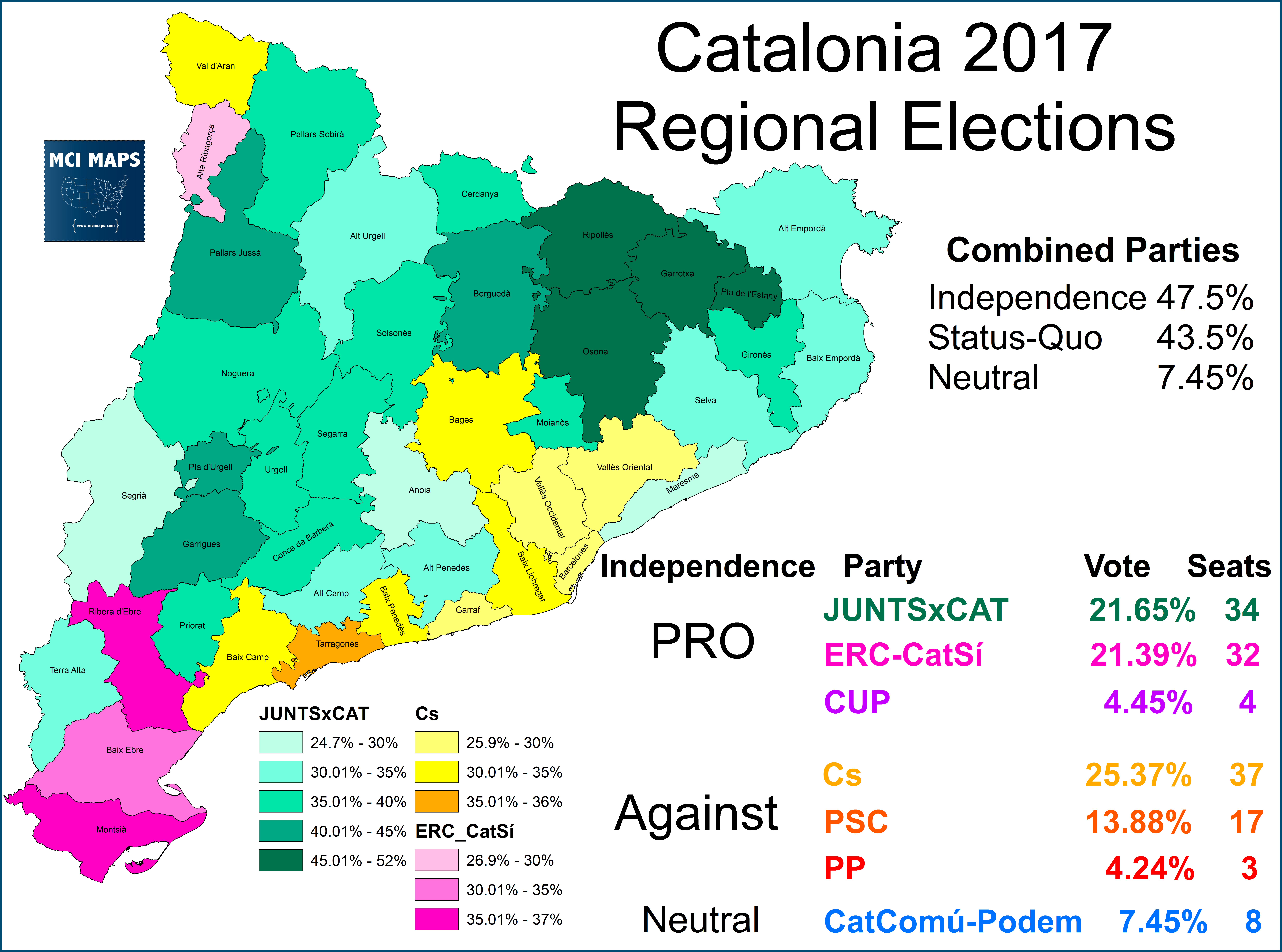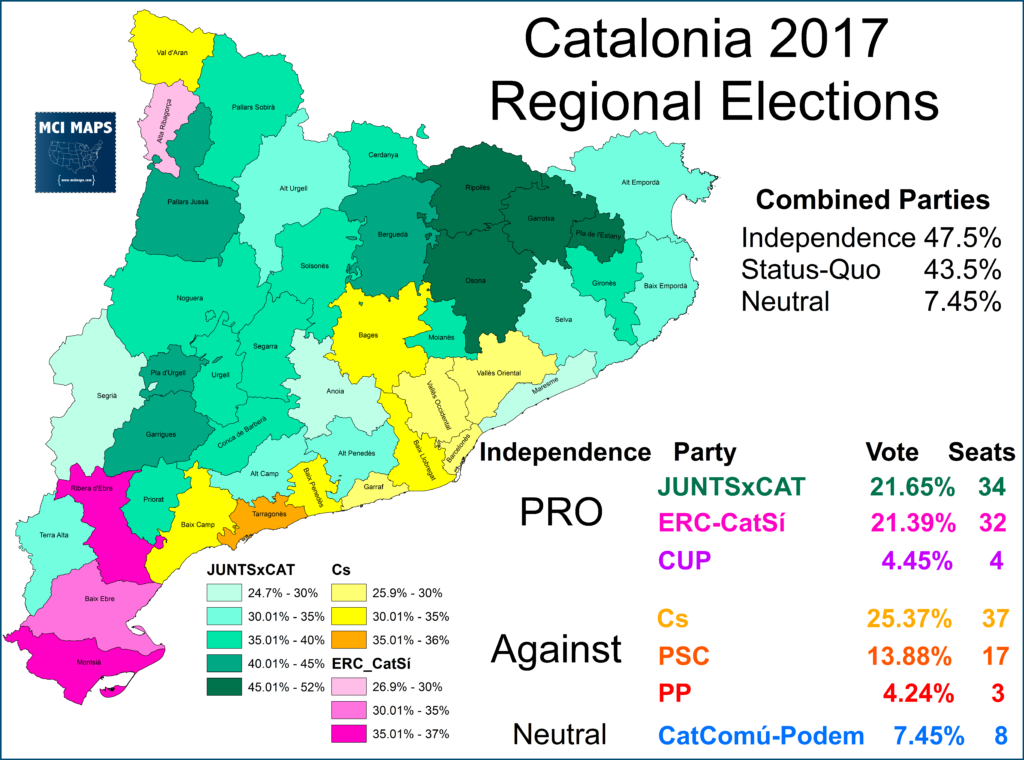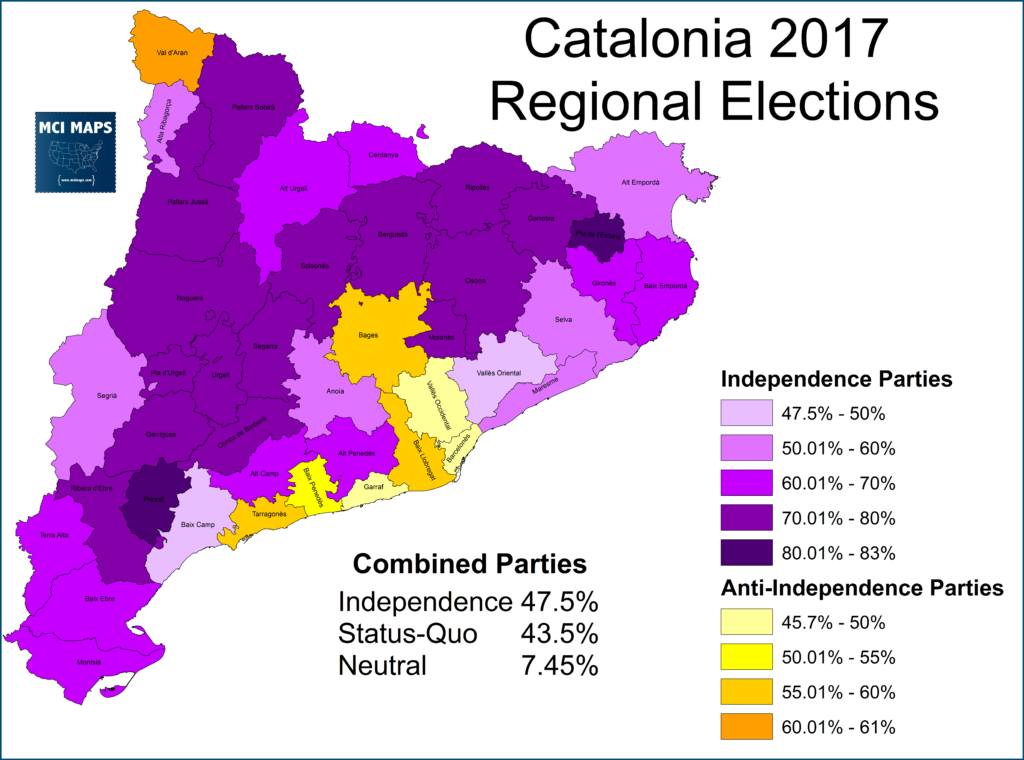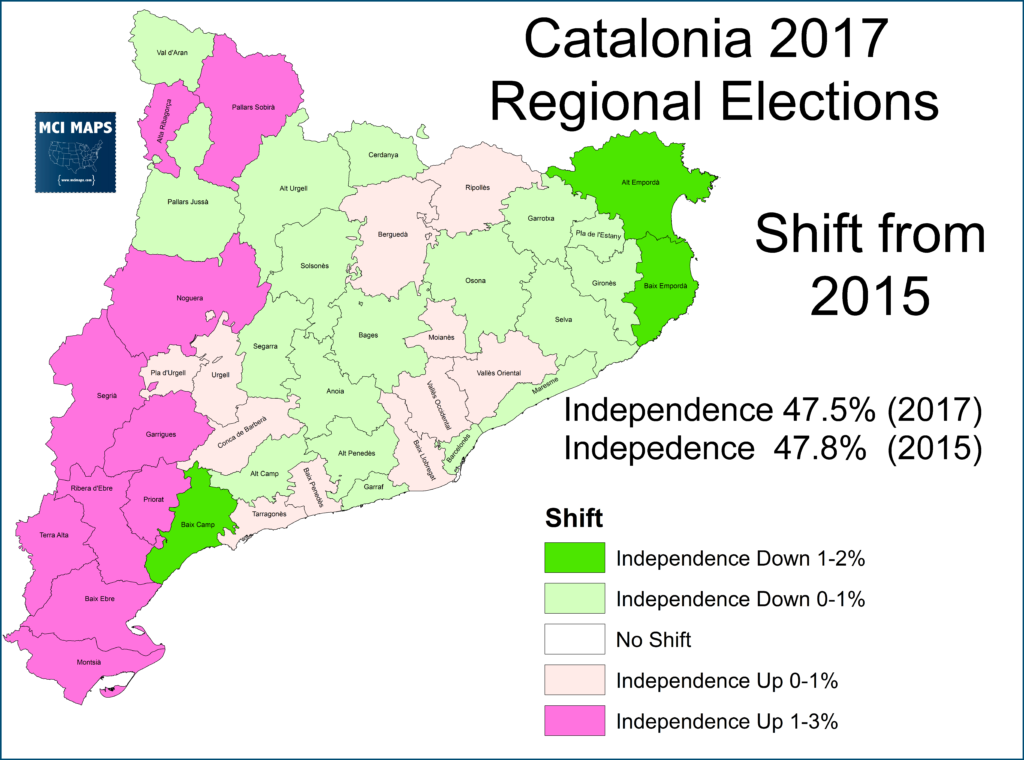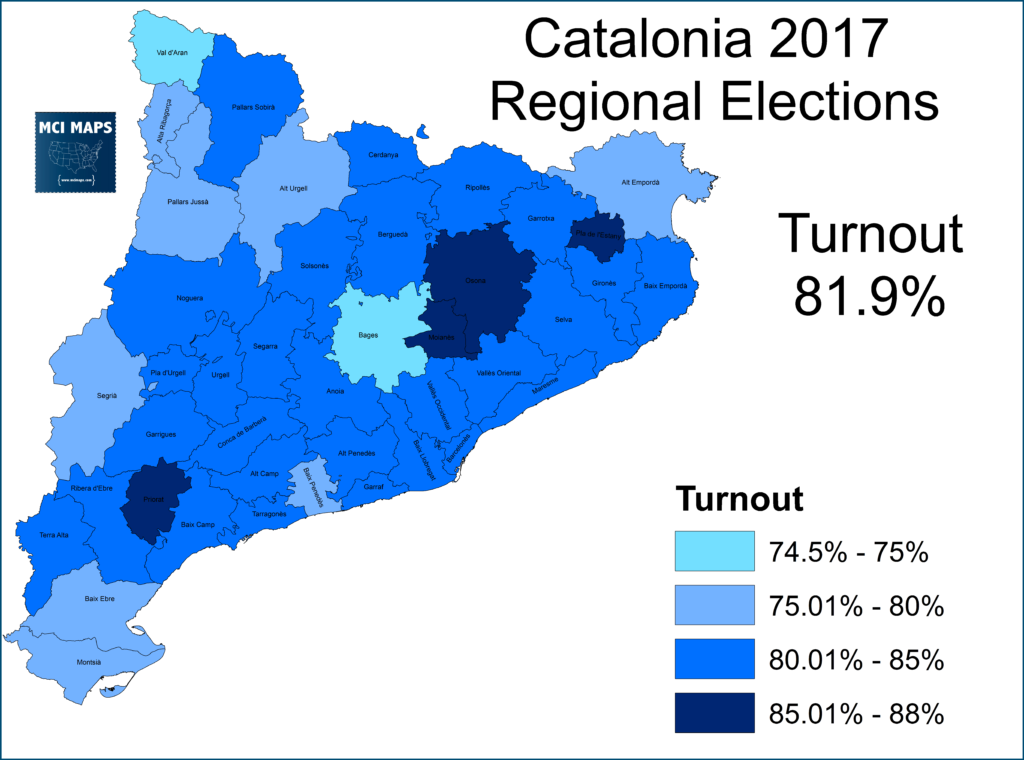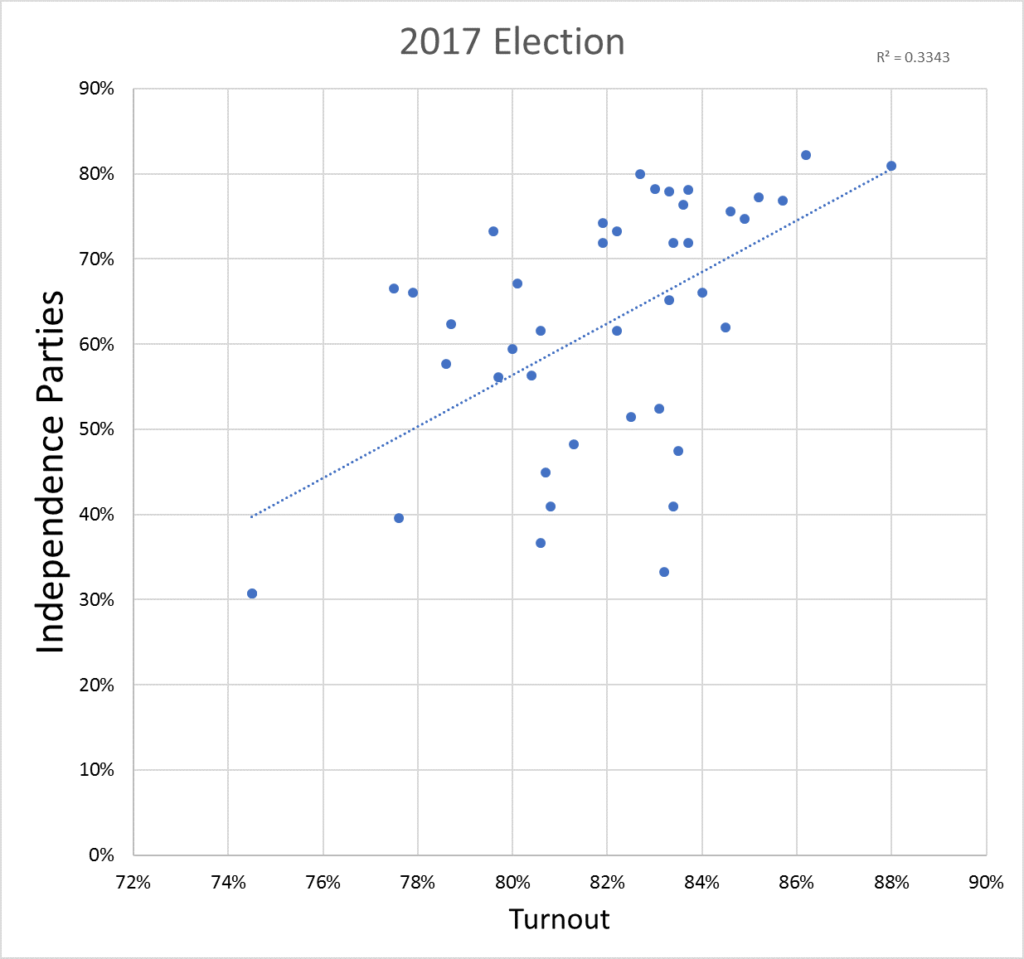In October of 2017, Catalonia, a semi-autonomous region of Spain, held a referendum on becoming an independent nation. The measure passed when opponents boycotted; setting of a chaotic series of events when the Spanish Government moved to strip the region of its autonomy and dissolve the regional parliament (at the time controlled by pro-independence parties). This followed violent clashes with police on the day of the referendum itself. Spain ordered a new regional election for the region, hoping that anti-independence parties would win a majority. The election was expected to be close, as the issue of independence splits nearly evenly in the region and has for years.
Election Results
The results are the exact opposite of what Spain’s central government wanted. Independence parties won the most votes and secured a flat out majority of the regional parliament. They have already won 70 of the 135 seats in the chamber, with 3 seats yet to be assigned.
The largest vote and seat share actually went to the Citizens (Cs) party, however, they will not be able to form a working majority. There will be some debate within the pro-independence parties: with parties like CUP favoring unilateral independence while other want to strike cordial separation.
Combining parties into pro or anti independence shows how stark the regional split is on the issue.
Anti-Independence sentiment is much stronger along the coast and in big cities. Barcelona, which cast almost 1/4 the regions vote, is strongly against the measure. Regions high for tourism are in general anti-independence, as that would be a chaotic and tense issue that could harm travel. The low populated but numerous counties outside the coast are much more pro-independence.
Despite all the chaos of the last few months, the shift since the 2015 regional vote (which saw the Independence parties gain a narrow majority) is very modest. Most counties saw support for independence-aligned parties fall or rise less than 1%.
The totals for the independence parties is nearly identical to 2015 despite everything that has developed since. While party loyalties have moved around, overall support for or against independence has barely nudged.
Turnout was strong in the region, no lower than 75% in any county. There were no notable boycotts, unlike in October’s referendum.
In addition, turnout was strongest in areas with high support for the pro-independence parties.
It will be hard for Spain to argue the vote isn’t legit when turnout was so strong.
Conclusions
It’s been hard to argue in favor of how Spain has handled the independence crisis in Catalonia. Rather than negotiating with the region, as the UK did with Scotland, they have taken a heavy-handed approach that has prompted clashes and emboldened independence pushers. The end result is going to be a regional government with a majority independence coalition just like before this mess started. This likely means continued tensions and crisis over Catalonia.

